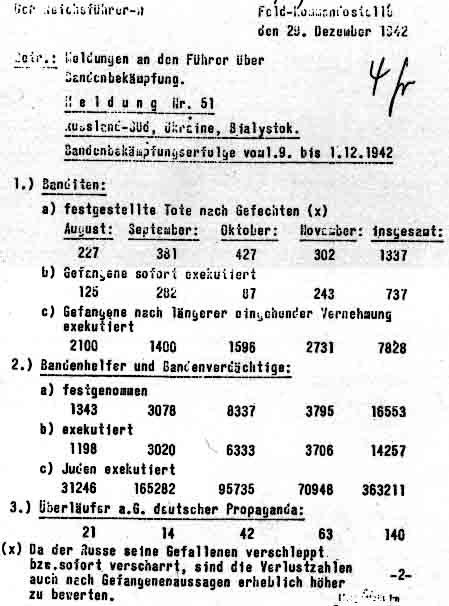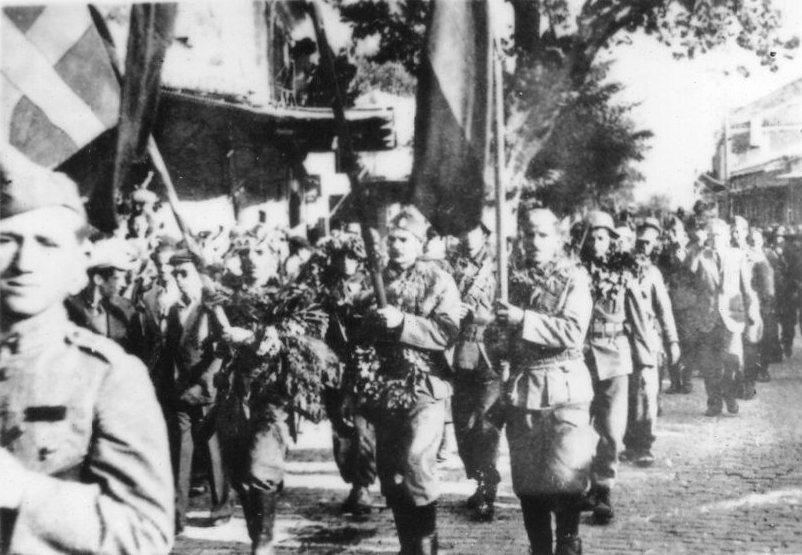|
Franz Krech
Major General (''Generalmajor'') Franz Krech (23 June 1889 – 27 April 1944) was the German commander of the 41st Fortress Division of the Wehrmacht during the World War II Axis occupation of Greece. He was ambushed and killed by a platoon of the Greek People's Liberation Army (ELAS) in Molaoi, Laconia.''Meyer Hermann Από τη Βιέννη στα Καλάβρυτα. Τα αιματηρά ίχνη της 117ης Μεραρχίας Καταδρομών στη Σερβία και την Ελλάδα'', Estia, 2004, p. 512Yiannis Priovolos, ''Μόνιμοι Αξιωματικοί στον ΕΛΑΣ, οικειοθελώς ή εξ'ανάγκης'', Alfeios Publications, p. 515 It led to harsh reprisals by the occupying forces and contributed to the declaration of the Peloponnese as an "operational zone", i.e. a war zone. Biography Franz Krech was born on 23 June 1889 in Görlitz. He joined the Deutsches Heer on the 2nd of May, 1908 and became a lieutenant on 19 August 1909. He s ... [...More Info...] [...Related Items...] OR: [Wikipedia] [Google] [Baidu] |
41st Infantry Division (Wehrmacht)
The 41st Infantry Division (), formerly the 41st Fortress Division (), was a German Army (Wehrmacht), German Army infantry division in World War II. It was employed on Axis occupation of Greece, occupation duties in southern Greece, and surrendered to the Yugoslav partisans at the End of World War II in Europe, end of the war. History Founded as the 41st Fortress Division, this unit was formed in Bruck an der Mur in December 1943, with its command staff being formed from the en cadre, cadre of the defunct 39th Infantry Division (Wehrmacht), 39th Infantry Division, and was ready for duty at the start of 1944 at a strength of 22 battalions. In its initial deployment, it was to defend the Peloponnese peninsula of Greece as a coastal component of LXVIII Army Corps, attached to the Army Group F under General Hellmuth Felmy. The 733rd Grenadier Regiment was attached to the division in September 1944, after it was separated from its parent 133rd Fortress Division during the evacuation ... [...More Info...] [...Related Items...] OR: [Wikipedia] [Google] [Baidu] |
Oberst
''Oberst'' () is a senior field officer rank in several German language, German-speaking and Scandinavian countries, equivalent to Colonel. It is currently used by both the Army, ground and air forces of Austria, Germany, Switzerland, Denmark, and Norway. The Sweden, Swedish rank ''överste'' is a direct translation, as are the Finland, Finnish rank ''eversti'' and the Icelandic rank ''ofursti''. History and origins is a German word. Spelled with a capital O, "" is a noun and defines the military rank of colonel or group captain. Spelled with a lower case o, or "", it is an adjective, meaning "superior, top, topmost, uppermost, highest, chief, head, first, principal, or supreme". Both usages derive from the superlative of , "the upper" or "the uppermost". As a family name, ''Oberst'' is common in the southwest of Germany, in the area known as the Black Forest (''Schwarzwald''). The name is also concentrated in the north-central cantons of Switzerland (Aargau & Canton of Zürich ... [...More Info...] [...Related Items...] OR: [Wikipedia] [Google] [Baidu] |
Hellmuth Felmy
Hellmuth Felmy (28 May 1885 – 14 December 1965) was a German general and war criminal during World War II, commanding forces in occupied Greece and Yugoslavia. A high-ranking Luftwaffe officer, Felmy was tried and convicted in the 1948 Hostages Trial. Biography Born Walter Hellmuth Wolfgang Felmÿ on 28 May 1885 in Berlin to Otto Emil Alexander and Anna Martha Maria leischerFelmÿ. In 1904, he joined the Imperial Army and, in 1912, Felmy went to flight school to become a pilot for the Imperial Army Air Service. During World War I, Felmy commanded a squadron on the Turkish Front. After the war, he remained in the German military. Felmy alternated between infantry and aviation assignments in the ''Reichswehr'' of the Weimar Republic. On 4 February 1938, Felmy was promoted to ''General der Flieger''. By the beginning of World War II, Felmy commanded Air Fleet 2 (''Luftflotte 2'') of the Luftwaffe. On 12 January, he was dismissed due to the Mechelen Incident and replaced by Al ... [...More Info...] [...Related Items...] OR: [Wikipedia] [Google] [Baidu] |
Kaisariani
Kaisariani () is a suburban town and a municipality in the eastern part of the Athens#Athens Urban Area, Athens agglomeration in Greece. Geography Kaisariani is located about southeast of Athens city centre, and of the Acropolis of Athens. The municipality has an area of 7.841 km2. Towards the east the municipality extends to the forested Hymettus mountain, where the 11th century Kaisariani Monastery is situated. The built-up area of Kaisariani is continuous with that of the center of Athens and the suburb Vyronas to the southwest. The main thoroughfare is Ethnikis Antistasis Avenue, which connects Kaisariani with the center of Athens and the A62 motorway (Greece), A62 Hymettus Ring Road (formerly the A64 until 2024). History The Kaisariani monastery was established on Mount Hymettos during the Byzantine times, in the late 11th or early 12th century. The town was founded in 1922 as a refugee camp for Greek refugees, refugees driven from Asia Minor, most of whom coming f ... [...More Info...] [...Related Items...] OR: [Wikipedia] [Google] [Baidu] |
1 May 1944 Kaisariani Executions
On 1 May 1944, 200 Greek communists (, "The 200 of Kaisariani") were executed at the firing range of the Athens suburb of Kaisariani by the Nazi occupation authorities as reprisal for the killing of a German general by Greek Resistance forces. Background Greece had been under the dictatorial and fiercely anti-communist Metaxas Regime since 1936. Members of the Communist Party of Greece were persecuted and put in prison, chiefly in the Akronauplia and Corfu prisons, or sent to internal exile in small islands. With the German invasion of Greece and the start of the Axis Occupation of Greece in April 1941, the communist prisoners were placed under German control. Following the Italian surrender in September 1943, most of the communist prisoners, formerly held in the Italian-run Larissa concentration camp, were moved to Haidari concentration camp in the northwestern suburbs of Athens. Executions On 27 April 1944, ELAS partisans ambushed and killed the German general Franz Krec ... [...More Info...] [...Related Items...] OR: [Wikipedia] [Google] [Baidu] |
Dissident
A dissident is a person who actively challenges an established political or religious system, doctrine, belief, policy, or institution. In a religious context, the word has been used since the 18th century, and in the political sense since the 20th century, coinciding with the rise of authoritarian governments in countries such as Fascist Italy, Nazi Germany, Imperial Japan, Francoist Spain, the Soviet Union (and later Russia), Saudi Arabia, North Korea, Turkey, Iran, China, and Turkmenistan. In the Western world, there are historical examples of people who have been considered and have considered themselves dissidents, such as the Dutch philosopher Baruch Spinoza. In totalitarian countries, dissidents are often incarcerated or executed without explicit political accusations, or due to infringements of the very same laws they are opposing, or because they are supporting civil liberties such as freedom of speech. Eastern Bloc The term ''dissident'' was used in the Eastern B ... [...More Info...] [...Related Items...] OR: [Wikipedia] [Google] [Baidu] |
Gestapo
The (, ), Syllabic abbreviation, abbreviated Gestapo (), was the official secret police of Nazi Germany and in German-occupied Europe. The force was created by Hermann Göring in 1933 by combining the various political police agencies of Free State of Prussia, Prussia into one organisation. On 20 April 1934, oversight of the Gestapo passed to the head of the ''Schutzstaffel'' (SS), Heinrich Himmler, who was also appointed Chief of German Police by Hitler in 1936. Instead of being exclusively a Prussian state agency, the Gestapo became a national one as a sub-office of the (SiPo; Security Police). From 27 September 1939, it was administered by the Reich Security Main Office (RSHA). It became known as (Dept) 4 of the RSHA and was considered a sister organisation to the (SD; Security Service). The Gestapo committed widespread atrocities during its existence. The power of the Gestapo was used to focus upon political opponents, ideological dissenters (clergy and religious org ... [...More Info...] [...Related Items...] OR: [Wikipedia] [Google] [Baidu] |
Bandenbekämpfung
In Military history of Germany, German military history, (), also referred to as Nazi security warfare during World War II, refers to the concept and military doctrine of Counterinsurgency, countering Resistance movement, resistance or insurrection in the Rear (military), rear area during wartime with extreme brutality. The doctrine provided a rationale for disregarding the established Law of war, laws of war and for targeting any number of groups, from Guerrilla warfare, armed guerrillas to civilians, as "bandits" or "members of gangs". As applied by the German Empire and later Nazi Germany, it became instrumental in the crimes against humanity committed by the two regimes, including the Herero and Nama genocide and the Holocaust. Historian Alex J. Kay estimates that around one million civilians died as a result of German anti-partisan warfare—excluding actual partisans—among the 13 to 14 million people murdered by the Nazis during World War II. Background According to his ... [...More Info...] [...Related Items...] OR: [Wikipedia] [Google] [Baidu] |
Morale Operations Branch
Morale Operations was a branch of the Office of Strategic Services during World War II. It utilized psychological warfare, particularly propaganda, to produce specific psychological reactions in both the general population and military forces of the Axis powers in support of larger Allied political and military objectives. Origins William Joseph Donovan formed the Morale Operations Branch of the Office of Strategic Services on March 3, 1943.Central Intelligence Agency. (2010, July 9). The office of strategic services: morale operations branch. Retrieved from https://www.cia.gov/news-information/featured-story-archive/2010-featured-story-archive/oss-morale-operations.html Donovan admired the perceived effectiveness of Nazi propaganda and saw the United States' lack of similar operations as a significant weakness.Laurie, C. (1996). The propaganda warriors: America's crusade against Nazi Germany. Lawrence, KS: University Press of Kansas. To that end, he created the Morale Operatio ... [...More Info...] [...Related Items...] OR: [Wikipedia] [Google] [Baidu] |
National Liberation Front (Greece)
The National Liberation Front (, ''Ethnikó Apeleftherotikó Métopo'', EAM) was an alliance of various political parties and organizations which fought to liberate Greece from Axis Occupation. It was the main movement of the Greek Resistance during the occupation of Greece. Its main driving force was the Communist Party of Greece (KKE), but its membership throughout the occupation included several other leftist and republican groups. ΕΑΜ became the first true mass social movement in modern Greek history. Its military wing, the Greek People's Liberation Army (ELAS), quickly grew into the largest armed guerrilla force in the country, and the only one with nationwide presence. At the same time, from late 1943 onwards, the political enmity between ΕΑΜ and rival resistance groups from the centre and right evolved into a virtual civil war, while its relationship with the British and the British-backed Greek government in exile was characterized by mutual mistrust, leading ... [...More Info...] [...Related Items...] OR: [Wikipedia] [Google] [Baidu] |
Special Operations Executive
Special Operations Executive (SOE) was a British organisation formed in 1940 to conduct espionage, sabotage and reconnaissance in German-occupied Europe and to aid local Resistance during World War II, resistance movements during World War II. SOE personnel operated in all territories occupied or attacked by the Axis powers, except where demarcation lines were agreed upon with Britain's principal Allies of World War II, Allies, the United States and the Soviet Union. SOE made use of neutral territory on occasion, or made plans and preparations in case neutral countries were attacked by the Axis. The organisation directly employed or controlled more than 13,000 people, of whom 3,200 were women. Both men and women served as agents in Axis-occupied countries. The organisation was dissolved in 1946. A memorial to those who served in SOE was unveiled in 1996 on the wall of the west cloister of Westminster Abbey by the Queen Elizabeth The Queen Mother, Queen Mother, and in 2009 on t ... [...More Info...] [...Related Items...] OR: [Wikipedia] [Google] [Baidu] |







